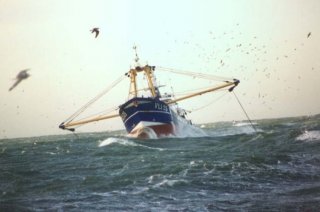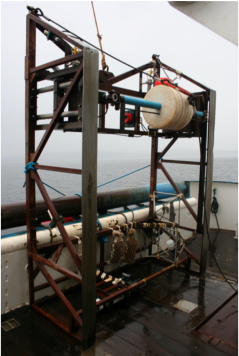
News
Physical impact of fishing gears on the seafloor
The physical impact of fishing gears on the seafloor is largely unknown. Commonly used demersal fishing gears are otter trawls, beam trawls and seines to catch demersal fish species and crustaceans and dredges to catch scallops. These fishing gears all consist of elements that are in contact with the seafloor.

BENTHIS Researchers Barry O’Neill, Keith Summerbell and Ana Ivanović conducted fieldwork in the Moray Firth, Scotland using an experimental towed sledge equipped with electronic sensors to investigate the impact of these elements on the seafloor (Figure 2). Cylindrical and rectangular shaped objects of different weights and sizes were attached to the frame and towed over the seabed to simulate different fishing gear elements.

The experiments demonstrated that varying the weight of the elements does not influence the amount of sediment mobilised into the water column. Furthermore the researchers showed that the amount of sediment mobilised increases as the hydrodynamic drag increases. Hence, one way of reducing the amount of sediment mobilised is to reduce the hydrodynamic drag of the gear.
These results provide a better understanding of the physical and mechanical processes that take place when a towed fishing gear interacts with the seabed. O’Neill: “This research will permit the development of more fuel efficient gears and gears of reduced benthic impact. We will also be able to improve the modelling of the sediment mobilised into the turbulent wake behind towed fishing gears, which will lead to better assessments of the environmental and ecological impact of fishing gears”. Lower hydrodynamic drag will also result in reduced fuel costs for the fishermen and reduced emissions of nitrogen oxides, sulphur oxides and greenhouse gases such as CO2.

Read the original article:
O'Neill, F.G. and Ivanović, A., 2016. The physical impact of towed demersal fishing gears on soft sediments. ICES Journal of Marine Science. 73 (suppl 1): i5-i14.
O’Neill F.G. and Summerbell K., 2016. The hydrodynamic drag and the mobilisation of sediment into the water column of towed fishing gear components. Journal of Marine Systems. 164, 76 – 84.
